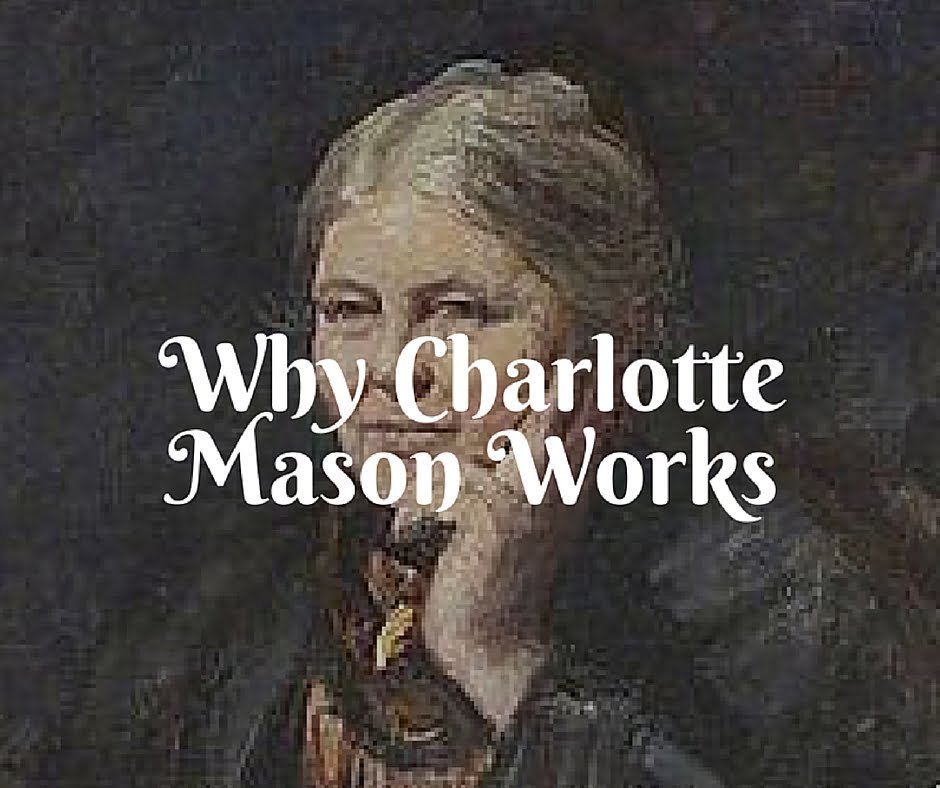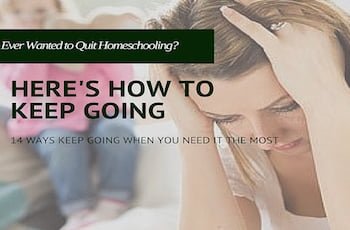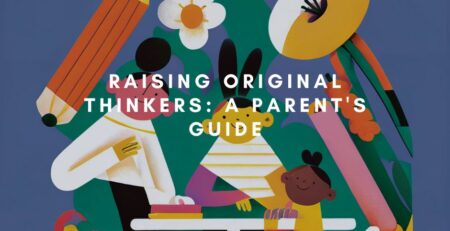Why Charlotte Mason Education Works
The History of Charlotte Mason Education
Charlotte Mason was a teacher who quickly recognised a need for reform. Over many years of teaching experience, she refined her ideas and methods, but the basics stayed the same. In 1886, her book Home Education was published and quickly became widely popular in Great Britain. Mothers looking for a better way to teach their children instantly gravitated towards Mason’s methods. In 1887, Mason started the Parents’ National Educational Union (PNEU), while she continued to offer lectures throughout the UK. In 1891, she founded the House of Education to train teachers and governesses in her method. The Charlotte Mason method became so popular that the training centre couldn’t train governesses fast enough to meet demand. The PNEU also established schools throughout the UK that followed the Charlotte Mason method. Mason continued training teachers until her death in 1921 at the age of eighty-one.
She didn’t offer grades or incentives for learning; rather, she gently encouraged children to do their best work every time and love learning for its own sake. She believed learning is best accomplished through real life experiences – through interactions with nature, good books, and warm companions.
The Charlotte Mason method is based on her belief that children are people and that we must educate that whole person, not just their minds. Her approach to education is three-pronged, and in her words, “Education is an Atmosphere, a Discipline, a Life.”
What is An Atmosphere, A Discipline, A Life?
By “Atmosphere,” Charlotte means the surroundings in which a child grows up. They absorb a lot from their home environment. Charlotte believed that the ideas that you hold dear about life as a parent make up one-third of your child’s education.
By “Discipline,” Charlotte meant the discipline of good habits. More specifically she meant the habits of character. She believed that instilling these good habits in your child’s life make up another third of their education.
By “Life”, which is the final third of education, she believed this had to do with academics. She fully supported the idea of giving children living thoughts and ideas and not just dry facts that come out of a textbook.
All of her methods of teaching the various subjects are built around this concept.
What are Living Methods?
As an example, Charlotte’s students used living books rather than dry textbooks. But what are living books? They are normally books that are written in a story format by an author that has a specific passion about a subject. This living book makes subjects come alive for children.
Children are then asked to narrate back, in their own words what was read in the living book, in order for it to stick in their minds. There are no fill-in-the-blank or multiple-choice questions for them; they have practiced using rich language as they point out the ideas that they have gathered from the reading and any mental connections they made between it and other ideas already in their growing minds and hearts.
She taught handwriting and spelling by using passages from great books that communicated great ideas. She was against the use of a list of words presented to a child, which is often seen in education today.
One of her greatest beliefs was making sure that children spent time outdoors with God’s creations and interacting with these creations. They would learn how nature in all her glory worked,
The work of great artists and composers were introduced to all her students. They got to spend time listening and appreciating the works personally.
She also introduced her students to a number of ideas from a wide variety of sources from Shakespeare to knitting, to bible, to tramping through fields and streams, to algebra, to singing and even foreign languages.
Throughout her teaching she believed and emphasised that children should develop good habits of giving their full attention to what they were learning and giving it their all while they were in the process. She wanted each student to put their best efforts into their work and not just learn for the sake of it.
The Charlotte Mason approach has been widely adopted by many homeschoolers who aim to live out her vision of educating the whole child.
What subjects are included in the Charlotte Mason Approach?
Due to her approach to learning, she gave short lessons to allow her kids to fully focus their attention on what they were learning and to give it their best. There are no grades or rewards or competition, it is simply about children doing their very best and focusing.
Here are the subjects taught and how they are taught.
History – living books, narration, and book of centuries. History goes deep showing the real life and times of the people in the period. History charts and timelines are made to make it more enriching.
Geography – living books, narration, map work
Bible – read aloud, narration, memorising and reciting regularly
Maths – manipulatives and a firm understanding of the ‘how’ of maths but not cramming facts. Always teach the concept before the abstract
Science – extensive outdoor time, nature study, living books, narration
Foreign languages – hear and speak and then read and write
Writing – copy work for writing and oral and written narration for composition
Composition – oral and written narration for composition
Spelling – building words, copy work, prepared dictation. Spelling is taught by looking at the correct spelling, closing eyes and then telling the spelling. They do this until they get it right
Grammar – not formally studied until older than 10
Art – Picture study for art appreciation, art instruction and handicrafts
Music – music study for music appreciation, instrumental instruction and singing
Literature – living books, narration
Poetry – read aloud and enjoys frequently, memorises and recites occasionally (including Shakespeare)
Free Time Handicrafts – children are given plenty of free time in the afternoons to play with no homework. The philosophy is that kids need unstructured time from adult supervision. Here you can introduce some manipulative toys and handicrafts are introduced for children at a slow pace including things like knitting, gardening and more.
Physical Exercise – exercise is a vital part of the Charlotte Mason approach and fun exercises should be given to them to enjoy like skipping, calisthenics or other activities and should be done on a daily basis.
Example of a Weekly Schedule
If you’re considering Charlotte Mason, here is an example of a weekly schedule that you can follow with your children.
| Time | Monday | Tuesday | Wednesday | Thursday | Friday |
| 9.00 – 9.20 | Maths | Maths | Maths | Maths | |
| 9.20 – 9.40 | Handwriting | Handwriting | Handwriting | Handwriting | |
| 9.40 – 10.00 | History | History | History | History | |
| 10.00 – 10.50 | Read aloud literature | Read aloud literature | Read aloud literature | Read aloud literature | |
| 10.50 | Free Time Handicrafts | Free Time Handicrafts | Free Time Handicrafts | Free Time Handicrafts | Free Time Handicrafts |
| 11.15 – 12.00 | Lunch | Lunch | Lunch | Lunch | Lunch |
| 12.00 | Drill | Drill | Drill | Drill | 2nd language |
| 12.20 – 12.40 | Science | Science | Science | Science | P.E. Social |
| 12.40 to 1.00 | Simply Grammar | Simply Grammar | Simply Grammar | Simply Grammar | P.E. Social |
| 1.00 – 1.20 | 2nd language | Music | Art Appr. | Poetry | P.E. |
| 1.20 – 2.00 | Map Work | Children read aloud | Children read aloud | Children read aloud | P.E. |
Charlotte Mason also suggested that certain hours were followed for different grades to get the best out of the children. Here are her guidelines.
Grades 1 to 3
Periods here would be 10 to 20 minutes
- English – 6 hours 20 minutes
- Maths – 1 hour 50 minutes
- Science – 1 hour 10 minutes
- French – 40 minutes
- Handicrafts – 2 hours
- Drill – 3 hours
Total – 15 hours
Grades 4 to 6
Periods would be 20 to 30 minutes
- English 4th Grade – 7 hours 20 minutes
- English 5th and 6th Grade – 8 hours 50 minutes
- Maths – 2 hours 30 minutes
- Science – 2 hours 10 minutes
- Languages 4th Grade – 1 hour 30 minutes
- Languages 5th and 6th Grade – 3 hours
- Drill etc. – 3 hours
Total 4th Grade – 17 hours
Total 5th and 6th Grade – 18 hours 30 minutes
7 Characteristics of Charlotte Mason Education
In order to help you decide if this is the right approach for you in terms of homeschooling, here we take a look at 7 characteristics of the Charlotte Mason approach and why it works.
1. Habits
Charlotte believed that the development of good habits within a child provided the foundation for early education. She wrote, “The mother who takes pains to endow her children with good habits secures for herself smooth and easy days.”
Because of this she believed that formal academics should only start at the age of 6, instead advocating play and work within the boundaries of the family unit.
Charlotte saw good habits as so crucial that she advised putting all else aside if a bad habit appeared, and working with the child (in a friendly way) to resolve the issue before it developed any further. Bad habits don’t just go away, and Charlotte believed that as parents we needed to place emphasis on the bad habit to break it, before it became a major problem.
She wrote that “Every day, every hour, the parents are either passively or actively forming those habits in their children upon which, more than upon anything else, future character and conduct depend.”
So the question is not Am I teaching my child habits? The question is Which habits am I teaching my child? Yes, other influences may play a role, but it is the habits learned from parents that have the most impact upon a child’s developing character.
“The habits of the child produce the character of the man.”
2. Style of Lessons
Charlotte Mason style lessons are extremely short, especially for young children. The goal is to train the child to focus fully on their work, but only for the amount of time that they are capable of in relation to their age.
For early elementary-aged children this often means only 5-15 minutes per subject. In older grades the duration could extend to 45 minutes or more.
If a child becomes restless, Charlotte advised changing the lesson to a different type of subject–maybe moving from handwriting to music study, or from maths to handicrafts.
Short lessons means that more subjects can be incorporated into a school day. This fits with the Charlotte Mason philosophy of introducing many topics to children and allowing them to really find their passions and interests.
3. Living Books
Although we’ve mentioned this before, this is a critical element to the Charlotte Mason educational approach and why it works so well. You won’t find any boring text books here. Books are always written by an author that is passionate about the subject and the information is filled with interesting and relevant information for children to learn, bringing the subject alive for them.
4. Narration
One of the central methods to evaluate students is based on narration. The idea behind the concept of narration is to teach a child to think and express themselves clearly and articulately.
Up until the age of 10 or 11, Charlotte advises teachers or parents to use mainly oral narration with a child. After listening to a short passage of a book, the child will tell back, in their own words, important aspects of the story.
By letting a child do this orally it helps them develop their analytical thinking skills without getting held up by handwriting.
By around the age of 11 she advises that children start now doing written narrations, which will get longer and more in depth as they get older.
5. Dictation
Dictation exercises introduce and reinforce spelling and grammar concepts. She recommends using inspiring quotes or Scripture for dictation. The child studies the passage until they are certain of the spelling and punctuation. Then the teacher or parent dictates the passage slowly while the child writes it down.
6. Art and Music Study
Charlotte Mason believed in exposing a child to excellence in many forms, which is why she introduced music and art appreciation at her schools. One composer or artist was studied each term – both through experiencing the music and art, reading living books about the artist, and sometimes even reproducing the style through art or music lessons.
7. Nature Study
Charlotte thought children should spend as much time as possible outdoors, especially as young children. They kept their very own detailed nature journals and also used nature guides to discover the natural world in their neighbourhood.
What are the Benefits of the Charlotte Mason Approach?
- Short, interesting lessons will keep both the homeschooling parent and his or her children happy.
- Teaching kids good habits are one of the major cornerstones of this educational approach and Charlotte believes that children should be taught good habits at home and remove bad habits as they appear.
- Narration is a key to the success of the Charlotte Mason approach and allows children to fully understand the subject matter that they’re being taught as they need to narrate back what they’ve learnt.
- Living Books are never boring
- Emphasis on experience rather than dry texts; the hands-on method usually leads to better retention of what is learned
- The Charlotte Mason Method allows for a lot of creativity
- This methodology could be heaven for young artists, aspiring writers and linguists
What are the Disadvantages of the Charlotte Mason Approach?
- The costs of good books can be expensive, however this can be negated by making use of your local library
- Daily walks in the sunshine are nice, but might be a lot less fun in heavy rain or cold, stormy weather
- Some people may feel overwhelmed at the whole idea of using a curriculum consisting of Living Books and are uncertain as to whether or not their choice of books are the right ones.
The Charlotte Mason approach to homeschooling has become increasingly popular and gives kids an enriched learning environment. We hope you’ve found this helpful.













LEAVE A COMMENT